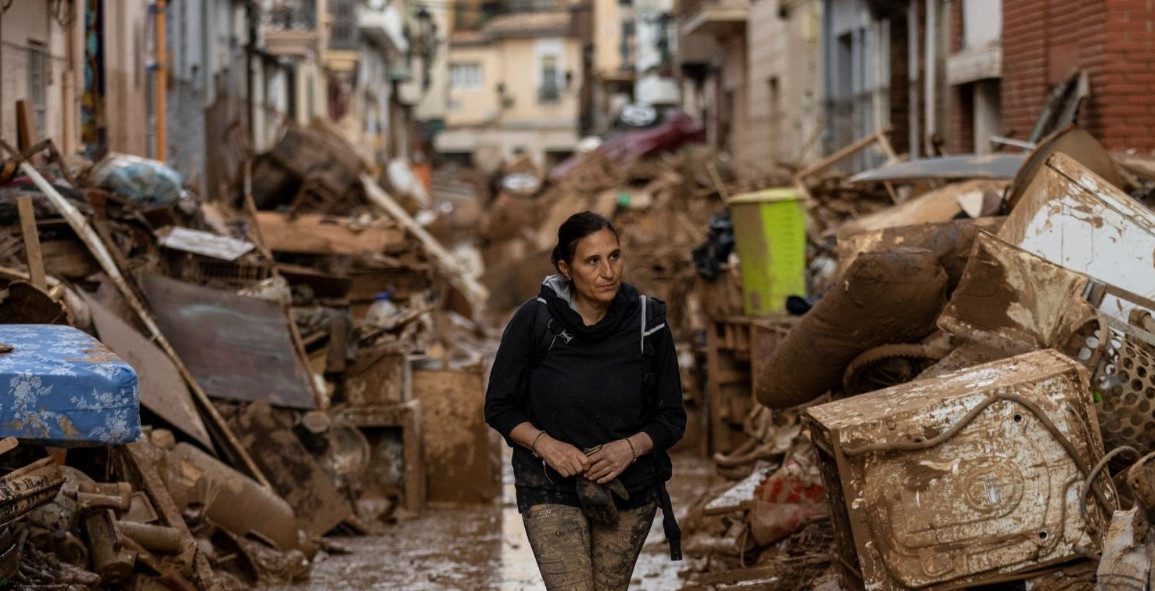As the death toll from recent catastrophic floods in Spain reaches 214, the nation grapples with the aftermath of intense rainfall that has left large areas of Valencia submerged and streets littered with debris.
The tragedy has sparked public outrage, culminating in protests where the king and queen of Spain faced mud and other projectiles from frustrated citizens.
Many are questioning why so many lives were lost despite prior forecasts of extreme weather.
Historically, the climate crisis has been perceived as a distant issue predominantly impacting poorer regions in the global south.
However, climate scientists have long warned that reliance on fossil fuels would exacerbate extreme weather patterns, including floods, storms, and heatwaves.
A recent study by World Weather Attribution confirmed that climate change intensified the rainfall experienced in Spain by 12% and made such events twice as likely.
In the affected region of Paiporta, where at least 62 lives were claimed, local officials expressed disbelief at the severity of the flooding, stating it was not a common occurrence.
This underscores a growing challenge in disaster preparedness: how to convey the threat of unprecedented events to communities unaccustomed to such dangers.

The urgency of this issue was starkly illustrated when warnings about impending floods were issued only after many residents were already trapped in their homes.
Similar mismanagement has been observed in past disasters, such as the 2021 floods in Germany, where insufficient information left vulnerable populations without crucial guidance.
The absence of timely and actionable alerts exacerbates the impact of such extreme weather events.
The crisis in Spain raises critical questions about the adequacy of local emergency services and disaster response systems, particularly in light of recent budget cuts to the Valencia Emergency Unit.
Experts argue for the necessity of strengthening these systems, alongside advocating for increased funding and coordinated prevention strategies from the EU, rather than solely focusing on post-disaster recovery.
With climate projections indicating a potential increase in global temperatures by up to 3°C by 2100, the frequency and severity of such floods are expected to escalate.
To mitigate future tragedies, governments must invest in resilient infrastructure and rethink urban planning strategies that prioritize community safety over vehicular convenience.
This includes restoring natural waterways to absorb excess rainfall, thus preventing water from inundating homes.
Spain’s devastating floods serve as a stark reminder of the urgent need to adapt and prepare for a climate-altered future, ensuring that communities are equipped to survive and thrive amid increasing environmental challenges.

